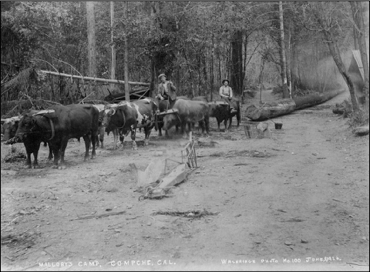
“The back-to-the-land thing was interesting. But we were wondering, outhouses? Why?” Old-timer respondent
Along with natural beauty, the ability to use one’s land as desired was a central reason to live in Comptche in the 1970s. Large plots of land afforded an isolated kind of privacy that people continue to treasure and protect.
Hippie immigration to the rural North Coast of California represented a fourth wave of immigration: Russian colonization, two waves of European-American immigrants, then back-to-the-landers. The 1970s wave of newcomers was more like a surge or to some old-timers, a tsunami.
Population growth in small towns was a national phenomenon during the 1970s. The rugged and rural north coast of California had an influx of young people returning to the land and a simpler way of life.
“Recent increases in population have largely been due to the back-to-the-land movement.” Comptche General Plan
The written plan was based on three years of meeting minutes and discussions about land use in Comptche. The committee was thorough, making site visits, trips to the county seat, gathering and recording community input, and gaining full committee approval of the final draft submitted to Mendocino County’s Planning Division in Ukiah.
The author of Comptche’s general plan is not named, reflecting the cooperative spirit of the time: We wrote it together. The words belong to all of us. Many years later, such things as authorship seem more significant: author credit goes to back-to-the-land newcomer Michael Nolan. He and his young family arrived in the early 1970s.
The questionnaire I distributed t participants asks, “Why did you/your family move to Comptche?”
Many old-timer residents have lived in Comptche since their ancestors immigrated from northern Europe. Many of the region’s towns began as ethnic-based communes, such as Fort Bragg’s Sointula, a Finnish word meaning, “place of harmony,” where they first built a communal kitchen and sauna, then they built cabins. The early communes grew into small communities and eventually towns. Comptche was settled largely by Finn and Norwegian wood folk who came for the timber or were fleeing war.
Research participants who were newcomers in the Seventies provided a colorful list of reasons why they came:
“The back-to-the-land movement. I was two and my parents wanted to get out of the city.”
“We were young adults embracing the movement, wanted to simplify our lives.”
“To live off the land, strive for self-sufficiency… grow organic vegetables and raise livestock.”
“The culture of nearby Mendocino.”
“Natural beauty.”
Number one: affordability and availability of great parcels of land.”
For the people and place of Comptche, this was a new kind of land use. Historically, people depended primarily on small-scale farming to support the family members who were working the land as loggers and ranchers. In the 1970s, the new immigrants wanted to preserve the forest environment and subsist on small farms in tune with nature.
While differing approaches to land use caused conflict, the ways residents used land also created relationships among new and established residents. Specific instances in upcoming posts include how the community came together around common concerns about land, such as fire.
To learn how to live off the land, newcomers relied on established residents. Some old-timers felt threatened by newcomers and avoided interactions but indulged in gossip. But other old-timers were open and welcoming to the young families reclaiming rural life. The desire to care for the land and the valued knowledge of homesteading began to bring people together.
Up next: Children
Resources:
Original research: Interviews and questionnaire were done with an agreement of anonymity, so project participants are usually not identified by name. Those who are have granted their permission are sometimes named. I wanted research so participants to express their views and experiences without self-censorship or concern about identity.
Secondary resources used for this post includes:
Luker, Kelly, 1996. Commune Sense, on Metro Active. e-document: www.metroactive.com/papers/metro/02.29.96/hippie-9609.html
Wilson, Nicholas, 2006. Mendocino in the Seventies: People, Places and Events of California’s Mendocino Coast.






